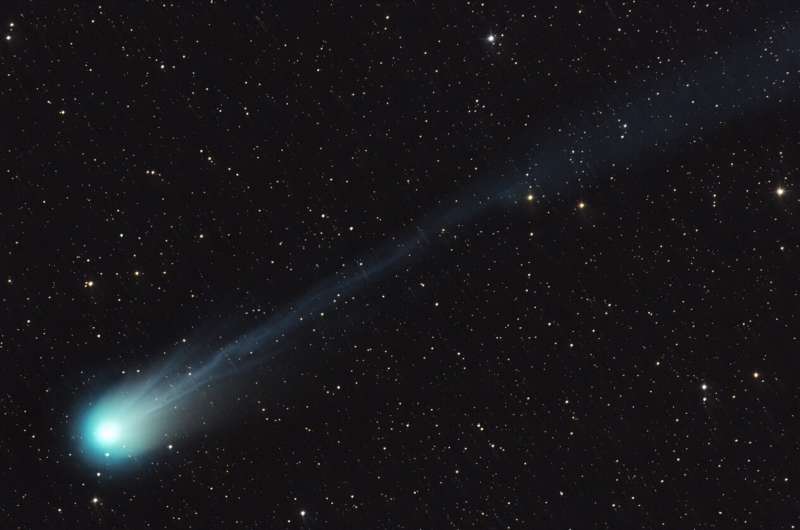A comet, known as 12P/Pons-Brooks, the size of Mount Everest, is making its first visit to the inner solar system in over 70 years. Over the next few weeks, this 'devil' comet could be visible to the naked eye.
This Halley-type comet is due to make its closest approach to the sun on 21 April, which is when it will be at its brightest. For those in the northern hemisphere, the comet is likely to be most visible between now and mid-April.
Dr. Robert Massey, deputy executive director at the Royal Astronomical Society, advises, "Don't expect it to be dazzlingly bright—the kind of image you see in photographs. It's not going to be like that." He suggests using a pair of binoculars or a sky-gazing app to help locate the comet. When spotted, it's likely to appear as a small, grayish fuzz, quite typical for many comets.
Stargazers should look to the west-north-west after sunset to catch a glimpse of Pons-Brooks, which completes its orbit once every 71.3 years and, therefore, won't be visible again until 2095.
The icy body, thought to have a nucleus about 34km (21 miles) in diameter, was recognized as a comet in 1812. However, it was seen as far back as the 14th century. It is named after the French astronomer Jean-Louis Pons, who discovered it in the early 19th century, and British-American astronomer William Robert Brooks, who observed it on its next orbit in 1883.
There has been plenty of interest and excitement about Pons-Brooks over the past few months, driven in part by a couple of unusual features. Firstly, photographs of its approach have captured the comet's "curious" green color, caused by a molecule called dicarbon that absorbs sunlight and re-radiates some of it with a characteristic green tinge. The other attribute that has piqued the interest of observers worldwide is its occasional "horned appearance," earning Pons-Brooks the nickname "Devil Comet." This is because the icy object is classed as a cryovolcanic comet, meaning it regularly erupts with dust, gases, and ice when pressure builds inside it as it is heated.




0 Comments